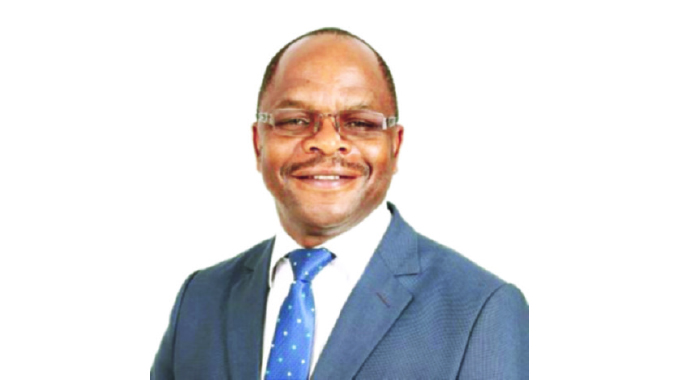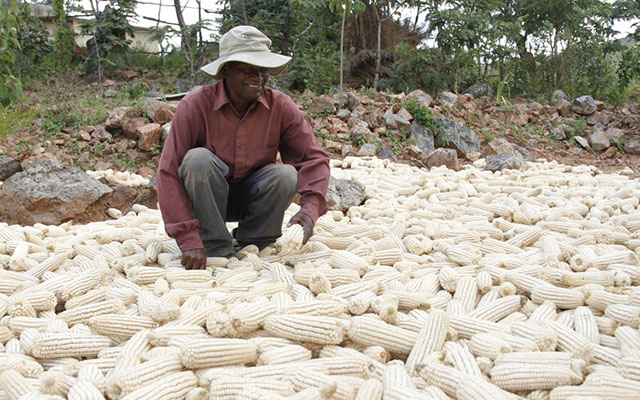US$13m oxygen plant breathes new life into Zim’s Covid-19 fight

President Mnangagwa recently launched an oxygen plant in Mutare that produces gaseous oxygen, liquid oxygen and nitrogen. This is a huge development for Zimbabwe and Africa, where the gap in medical oxygen availability is one of the defining health equity issues in the fight against Covid-19. Apart from Covid-19, oxygen is critical for basic surgeries and the treatment of many acute illnesses like pneumonia. In this report, Sifelani Tsiko (ST), our Agric, Environment & Innovations Editor speaks to Verify Engineering chief executive Engineer Pedzisai Tapfumaneyi (PT) about this new infrastructure and how it is going to ensure Zimbabwe is self-sufficient in the production of oxygen, a hugely critical need in the wake of the third Covid-19 wave hitting the country.
ST: Can you tell us briefly about Verify Engineering and its mandate. What was the motivation behind the creation of Verify Engineering — a technology development parastatal under the Ministry of Higher and Tertiary Education, Innovation, Science and Technology Development?
PT: Verify Engineering is a wholly-Government owned private limited company formed in April 2005 and is under the auspices of the Ministry of Higher and Tertiary Education, Innovation, Science and Technology Development. At inception, the company was mandated to implement the Coal-to-Liquid Fuels and Chemicals project.
It has now been given a new mandate under the Education 5.0 which is in line with the vision of the Ministry to focus on heritage-based science and technology innovations in order to help turn around the country’s economic fortunes.
Verify Engineering is a vehicle that aims at contributing to the broader national industrialisation agenda through commercialisation of various technologies. In the Education 5.0 model, Verify Engineering is answering to the call of Research, Innovation and Industrialisation. The projects being implemented are key to national economic development and self-sufficiency in terms of all liquid fuels, industrial gases, fertilisers, energy and a wide range of chemicals.
ST: What is the size of the oxygen plant?
PT: It’s an air separation plant aka oxygen plant. The plant has the capacity to produce the country’s medical oxygen requirements in five days of eight shifts or less when running on 24-hour shifts. The rest will be available for industrial use and export. Over 45 tonnes of oxygen can be produced per day.
ST: How much was spent to build the plant?
PT: Government has spent over US$13 million over the years on the two gas projects (oxygen and acetylene gas plants) including the associated amenities and the product distribution infrastructure.
ST: What are the general specs of the oxygen plant in brief?
PT: Purity of oxygen is 99,6 percent and purity of nitrogen 99,5 percent.
ST: What is the installed capacity of the plant in terms of production of gaseous oxygen, liquid oxygen and nitrogen? How many cylinders can the plant produce?
PT: I have given you the specs. The number of cylinders which can be filled depend on their sizes. However, note that not all the oxygen will be put into cylinders, but rather some will be distributed in bulk liquid containers. Most cylinders will be filled in the field/market from filling stations. So we can fill as many cylinders as we can.
ST: How does the oxygen plant in Zimbabwe compare to others in the Sadc region? What is the ranking of the Zimbabwean plant?
PT: Most of the oxygen in the region is produced in South Africa due to their much developed coal-to-liquid fuels and chemicals industry. Zimbabwe becomes second.
In Zimbabwe, Verify Engineering shall soon be the leading producer of oxygen if we are comparing to all the current installed capacities in the country.
ST: Medical oxygen is one of the most important health needs at present worldwide. It is a critical requirement in the fight against the Covid-19 pandemic. What is the production capacity of the plant? Is it able to meet national demand? Are there any plans to export surplus oxygen to the SADC region and other countries in various parts of the world?
PT: I have already answered some parts of your question. The plant can meet national demand. The rest of the production is then left for our internal use and our local industry. There is great potential in the regional export markets, which we have started exploring.
ST: Are there any plans to build more functional public oxygen plants in Zimbabwe to meet growing demand?
PT: Yes, mainly for industrial use, especially into our other projects on coal-to-fertiliser, chemicals and fuels, more and much bigger oxygen plants.
ST: Major challenges facing Zimbabwe and most other African countries in terms of medical oxygen supply include insufficient quantity, poor maintenance of oxygen production plants as well as challenges in distribution, scarcity of cylinders and technical skills. How is Verify Engineering addressing some of these concerns?
PT: Our quantities are currently promising to be enough and we plan to grow with the demand. Over the years, Verify Engineering has built capacity to even construct some of the components and maintain these plants. The skills are available from all our institutions of higher learning.
Verify Engineering is involved in training through internship programs to build its skills bases as well as for the country. Verify Engineering has acquired a large number of cylinders that will make a good impact in the supply of its products across the country.
We will continue increasing our quantities as we penetrate the market. We have good local technical skills to maintain and operate all the VE gas plants.
ST: Apart from vaccine scarcity and treatment challenges undermining effective response to the surging pandemic in Africa, there is the issue of access and price. What is the price of your oxygen? Do you think it will be accessible to the wider majority who need it?
PT: Our business model is to serve the general populace of Zimbabwe, so that the standard of living for all can be improved. Access to oxygen has fast become a basic human right due to Covid-19 pandemic.
This is why the Government was quick to release all the necessary support to make this project a success. However, we also should not create a parastatal that will be depending on Government handouts every time. So our aim is to balance the two. The company should be able to meet its overheads and be able to grow. Our prices will remain affordable by the general populace, but we remain sensitive to costs and market dynamics.
ST: What is the current production level of oxygen in Zimbabwe? What is the deficit? How much is spent on imports of oxygen at present?
PT: Our projected production levels are quite promising. As for the levels of production now and the deficits, I think Zimstats may be in a much better position to give the exact figures.
ST: How much is Zimbabwe going to save from the construction of this new oxygen plant?
PT: Currently, we think all the money that was going towards imports will be drastically reduced. Industry especially the mining sector have their demand levels which we are also growing together with the general growth of the economy.
ST: Looking ahead, how do you see Verify Engineering moving in supporting the attainment of national goals and targets?
PT: Verify Engineering is already contributing to the broader national industrialisation agenda through commercialisation of various technologies through heritage-based Science and Technology.
This is the given mandate and more projects are going to be unveiled as and when they are ready. We see ourselves as one of the key players in the drive to industrialise Zimbabwe in line with Vision 2030.







Comments